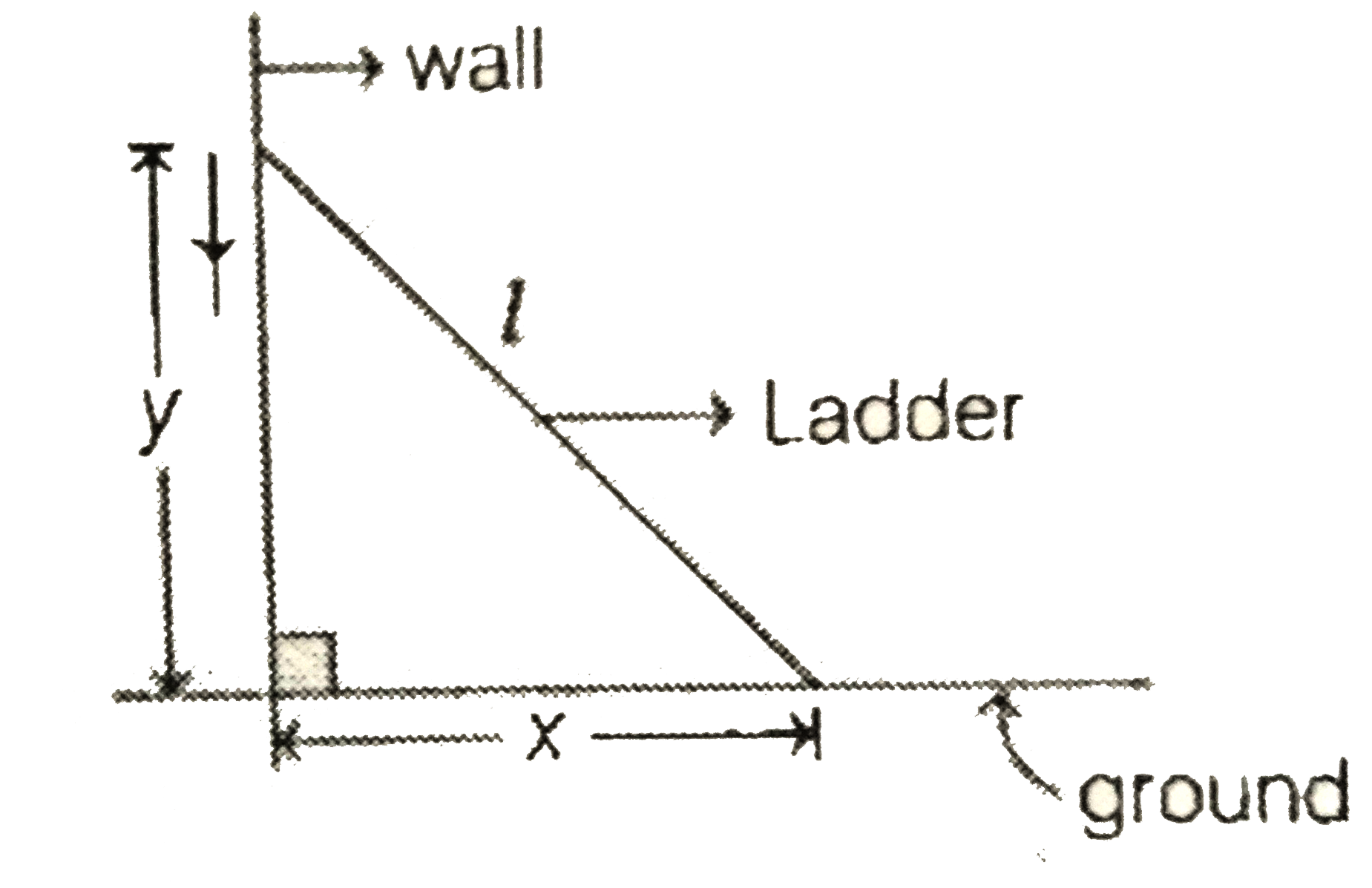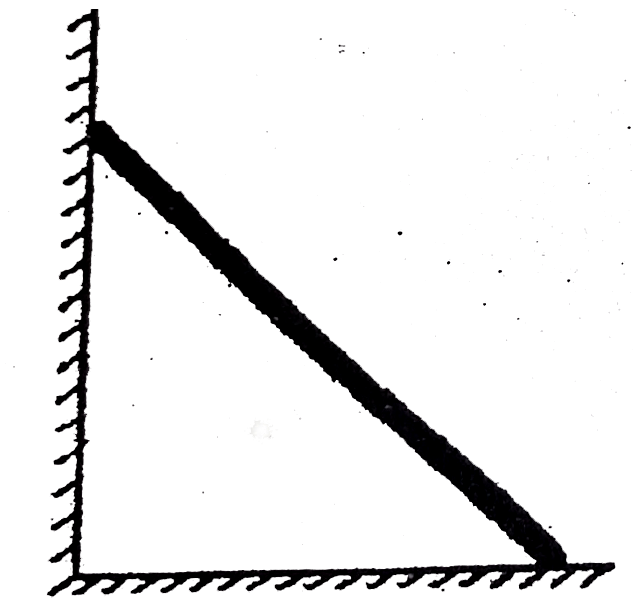A 2 m ladder leans against a vertical wall. If the top of the ladder begins to slide down the wall at the rate 25 cm/s, then the rate (in cm/s) at which the bottom of the ladder slides away from the wall on the horizontal ground when the top of the ladder is 1 m above the ground is
25√3
25√3
253
25
The correct Answer is:B
Given a lader of length l = 2m leans against a vertical wall. Now, the top of ladder begins to slide down the wall at the rate 25 cm/s.
Let the rate at which bottom of the ladder slides away from the wall on the horizontal ground is dxdtcm/s.

∵x2+y2=l2 [by Pythagoras theorem]
⇒x2+y2=4 [∵l=2m]...(i)
On differentiating both slides of Eq. (i) w.r.t. 't' we get
2xdxdt+2ydydt=0
⇒dxdt=−(yx)dydt ...(ii)
From Eq. (i), when y = 1m, then
x2+12=4⇒x2=3⇒x=√3m [∵x >0]
On substituting x = √3m and y = 1m in Eq. (ii), we get
dxdt=−1√3(−25100)m/s [given dydt=−25cm/sec]
=25√3cm/s
Topper's Solved these Questions
- BOOK - IIT JEE PREVIOUS YEARCHAPTER - TRIGONOMETRICAL RATIOS AND IDENTITIESEXERCISE - MAXIMA AND MINIMA4videos
TRIGONOMETRICAL RATIOS AND IDENTITIES
- BOOK - IIT JEE PREVIOUS YEARCHAPTER - TRIGONOMETRICAL EQUATIONSEXERCISE - TOPIC 3 PROBLEMS BASED ON MAXIMUM AND MINIMUM OBJECTEIVE QUESTIONS I (ONLY ONE CORRECT OPTION)9videos
TRIGONOMETRICAL EQUATIONS
- BOOK - IIT JEE PREVIOUS YEARCHAPTER - VECTOR ALGEBRAEXERCISE - Solving Equations and Reciprocal of Vectors (Objective Questions II) (Analytical & Descriptive Questions8videos
VECTOR ALGEBRA
Similar Questions
If a ladder which is 10m long rests against a vertical wall. If the base of ladder slides away from the wall at 1 m/s then how fast is the top of the ladder sliding down along the wall when the base is 6 m from the wall ?
View SolutionA ladder 5 m long leans against a vertical wall. The bottom of the ladder is 3m from the wall. If the bottom of the ladder is pulled 1 m farther from the wall, how much does the top of the ladder slide down the wall
View Solution
Knowledge Check
- Question 1 - Select One
A 2m ladder leans against a vertical wall. If the top of the ladder begins to slide down the wall at the rate 25cm/sec., then the rate (in cm/sec.) at which the bottom of the ladder slides away from the wall on the horizontal ground when the top of the ladder is 1m above the ground is :
A25√3B25√3C253D25 - Question 2 - Select One
A ladder 13 m long is leaning against a wall. The bottom of the ladder is pulled along the ground away from the wall at the rate of 4 m/sec. Find the rate of decreasing at which the top of the ladder moving downwards on wall when the foot of the ladder is 5 m away from the wall.
A−53m/sec.B53m/sec.C−103m/sec.D103m/sec. - Question 3 - Select One
A ladder leans against a wall if the ladder Is not to slip which one of the following must be true?
 Athe coefficient of friction between the ladder and the wall must not be zeroBthe coefficient of friction between the ladder and the floor must not be zeroCBoth A and BDEither A or B
Athe coefficient of friction between the ladder and the wall must not be zeroBthe coefficient of friction between the ladder and the floor must not be zeroCBoth A and BDEither A or B
A ladder 10m long rests against a vertical wall. If the foot of the ladder is 6m away from the wall and the ladder just reaches the top of the wall, how high is the wall?
View SolutionA ladder 10 meter long is leaning against a vertical wall. If the bottom of the ladder is pulled horizontally away from the wall at the rate of 1.2 meters per seconds, find how fast the top of the ladder is sliding down the wall when the bottom is 6 meters away from the wall
View SolutionA 13-m long ladder is leaning against a wall. The bottom of the ladder is pulled along the ground, away from the wall, at the rate of 2 m/s. How fast is its height on the wall decreasing when the foot of the ladder is 5m aways from the wall ?
View SolutionA ladder 5m long rests against a vertical wall. If its top slides down at the rate of 10cm/sec, then, when the foot of the ladder is 4m away from the wall, the angle between the floor and the ladder is decreasing at the rate of
View SolutionA ladder 20 ft long leans against a vertical wall. The top end slides downwards at the rate of 2 ft per second. The rate at which the lower and moves on a horizontal floor when it is 12 ft from the wall is
View Solution

